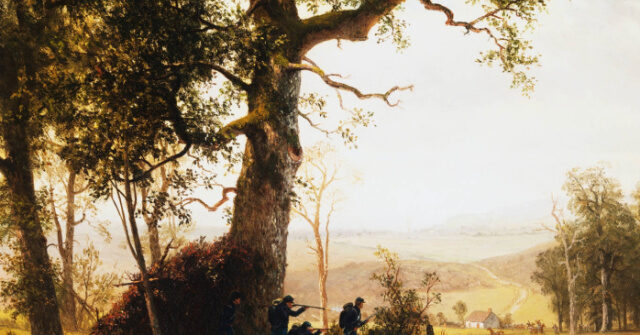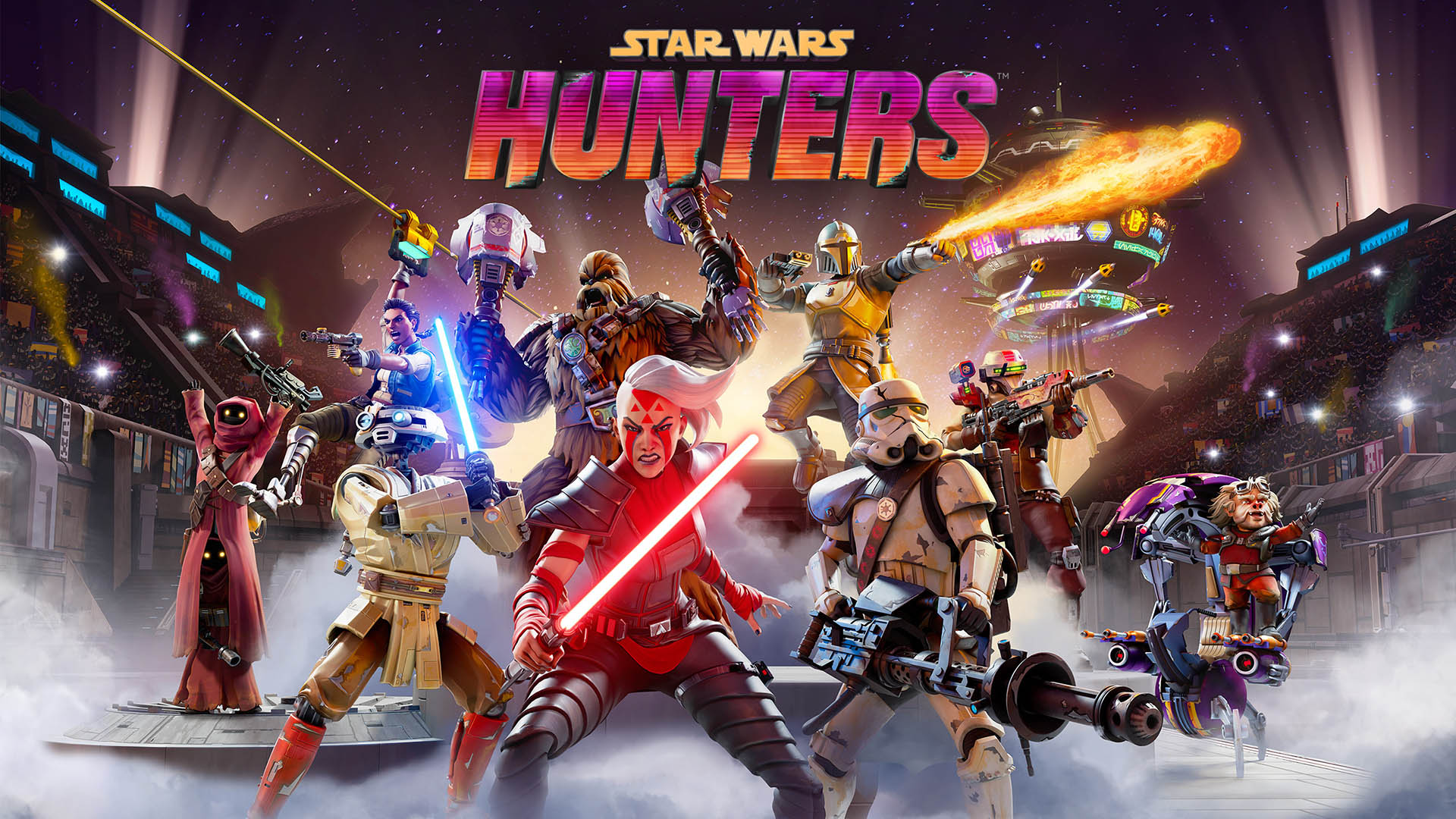Confederate guerrilla leader John Singleton Mosby continually urged his Rangers to “get the bulge” on their opponents by attacking first, using the element of surprise to swiftly and violently make the most of their small numbers to subdue their opponents. But in September 1864, the Union Scouts took a page from Mosby’s Rangers’ book to serve the Confederates a taste of their own medicine.
Early one morning, sixteen Union Jessie Scouts dressed in butternut and impersonating Confederate cavalry took the lead ahead of Captain Richard Blazer’s Scouts near the Virginia and West Virginia border. The Scouts picked up the tracks of scores of horsemen in the soggy ground. The Rangers they had been pursuing outnumbered the Federals by nearly two to one.
Blazer’s Scouts rode up a winding trail on the side of the mountain to a pasture where they fed their horses, tracking approximately 150 to 200 Rangers. Riding slowly and cautiously for two miles, the cavalcade halted at the bottom of a hill and “sat listening a short time.” Through the trees, they heard voices. Blazer ordered a detail of his men to dismount and creep up on the Confederates. Spencer rifles in hand, the Scouts expected to pour a volley of lead into the unsuspecting Rebels; instead, they found two men swilling applejack near a still.
Blazer’s men seized the two inebriated fellows, and maybe the applejack, and accused them of belonging to Mosby’s command. The alarmed men denied the charges and promised to aid in the search if they were not harmed. Blazer gave the Southerners a chance to lead them to the Rangers and “mounted slowly and carefully so as to not be led into a snare by the young men.”
The Union Scout, Johannes Adam Simon Oertel (1823–1909)
The bluecoats rode two abreast along a narrow lane bordering the eastern side of the Shenandoah River. The country road spilled into the open field of a large farm where Ranger companies A and B, under the command of Lieutenant Joseph N. Nelson, unsuspectingly dozed and their horses leisurely grazed. Confederate Ranger James Williamson recalled their surprise, “I could not imagine there was an enemy on our side of the river and thought the only danger would be from the other side at the ford, where I had been stationed.”
A crackle of Colts and the whine of horses signaled the start of the battle. Blazer’s men emerged from the woods behind the encamped Confederates like avenging wraiths as the Rangers scrambled to mount their horses. Within seconds, the Rebels found a way to “form four deep.”
“They are thick as fleas,” Sergeant Asbe Montgomery exclaimed to Blazer as the Scouts charged into the melee. Blazer turned around to view his galloping men descending into the maelstrom, and Montgomery yelled, “Come on boys, charge them and face them.”

A Scouting Party, Edwin Forbes, 1862, Library of Congress
The remarkable story is told in my new bestselling book, The Unvanquished: The Untold Story of Lincoln’s Special Forces, the Manhunt for Mosby’s Rangers, and the Shadow War That Forged America’s Special Operations. The book reveals the drama of irregular guerrilla warfare that altered the course of the Civil War, including the story of Lincoln’s special forces who donned Confederate gray to hunt Mosby and his Confederate Rangers from 1863 to the war’s end at Appomattox—a previously untold story that inspired the creation of U.S. modern special operations in World War II as well as the story of the Confederate Secret Service. The book gives a ground-breaking fresh perspective on the Civil War.
Putting spurs to their horses and yelling like madmen, the Union Scouts fired their pistols and their seven-shot Spencers into the Rangers’ ranks. Montgomery screamed, “You scoundrels; we will give you something else to do besides taking ambulances and wagon trains.”
Nelson tried to rally his men and initially drove some of Blazer’s Scouts back. The two sides bunched together: a mass of horses and armed men firing at each other at close range.
Confederate Emory Pitts found one of the Scouts pointing a pistol at his face. It misfired, and Pitts “leaned from his saddle, seized his antagonist by the scruff of the neck with his left hand, lifted the man from his saddle almost over on to his own lap, and with his right hand held a revolver under his captive’s breast and fired a bullet through him, dropping the corpse to the ground as he galloped away. The soldier happened to fall on one of our men who had been unhorsed, half hidden among the rocks, playing possum.”
A bullet grazed Ranger Williamson’s ribs. As he gasped for air, Ranger William Walston asked him, “Are you hurt much?”
“I don’t think it is much,” Williamson stoically but breathlessly responded. Bullets whistled near the men’s ears as the two Rangers fled from the Union Scouts. “Hold on to old Bob,” Walston shouted, referring to the Ranger’s venerable mount, which had been in countless skirmishes. Williamson sped off on Old Bob, and as he panned the area, he saw “our men were completely demoralized and fleeing in all directions.”
Fighting like the men they hunted, the Scouts “were all in a heap in a moment, shooting them off, none of our men having yet fallen, they began to fall back.” Rebel leader Lieutenant Nelson fell from his horse and took a bullet in the thigh. Like a dam that suddenly burst wide open, the Rangers fled in the direction of the river to escape from the Scouts.
“Soon everything was on our side,” recalled Montgomery. But the battle took its toll; a bullet slammed into Montgomery’s horse, and several of his fellow Scouts were wounded in the melee. A Ranger felled a Scout to Montgomery’s right and now turned his Colt on the sergeant’s face. “Luckily, I saw it just about two feet from me. Not having time to pull the hammer back [on my Colt] I aimed a blow at his arm and sent his revolver over his head.” Then Montgomery shouted over the din of battle and put a bullet in the Ranger, sending him “whirling” out of his saddle. With two Navy Colts and a Spencer, Montgomery and Blazer’s Scouts went to work in the thick of the Rangers’ ranks until a ball burrowed into Montgomery’s shoulder blade.
Blazer’s men had overwhelmed a larger force. He recorded, “I came upon Mosby’s guerrillas, 200 strong, and after a sharp fight of thirty minutes, we succeeded in routing him, driving them three miles, over fences and through cornfields. They fought with will, but the seven shooters [the Spencers] proved to be too much for them.”
After gathering the wounded from both sides, including a Ranger “who had his arm shot off,” the Scouts crossed the Potomac at Myer’s Ford and rode into Myerstown, West Virginia. Blazer’s command suffered five casualties—one dead, four wounded—and claimed to have killed six of Mosby’s men and one officer, wounded four more, and captured six Rangers.
A spirit of humanity pervaded the way Blazer’s men conducted themselves; as Ranger J. Marshall Crawford wrote, “although these Yankees were drunk” (some of the Scouts likely drank the applejack), “they carried our wounded to houses in the neighborhood, and requested every attention to be shown to them until removed. I must say they had more of the instincts of humanity about them on that day than any [Yankee] we ever met before.”
Patrick K. O’Donnell is a bestselling, critically-acclaimed military historian and an expert on elite units. He is the author of thirteen books, including his new bestselling book on the Civil War The Unvanquished: The Untold Story of Lincoln’s Special Forces, the Manhunt for Mosby’s Rangers, and the Shadow War That Forged America’s Special Operations, currently in the front display of Barnes and Noble stores nationwide. His other bestsellers include: The Indispensables, The Unknowns, and Washington’s Immortals. O’Donnell served as a combat historian in a Marine rifle platoon during the Battle of Fallujah and often speaks on espionage, special operations, and counterinsurgency. He has provided historical consulting for DreamWorks’ award-winning miniseries Band of Brothers and documentaries produced by the BBC, the History Channel, and Discovery. PatrickKODonnell.com @combathistorian

